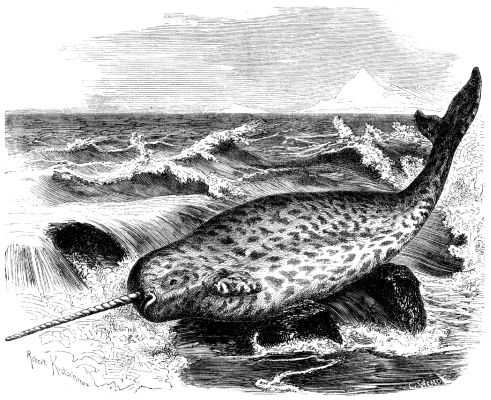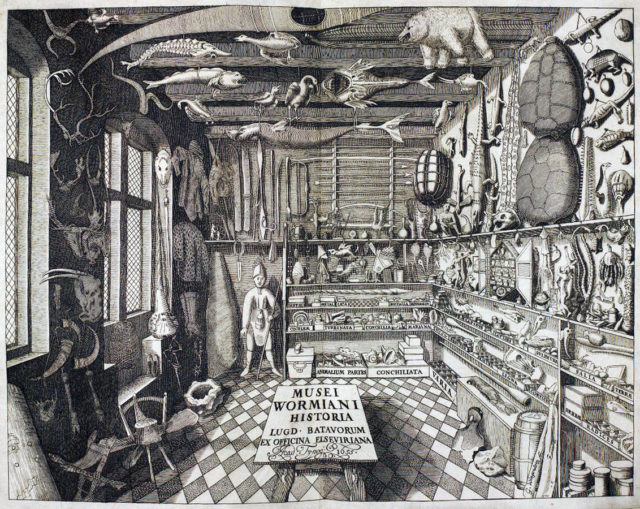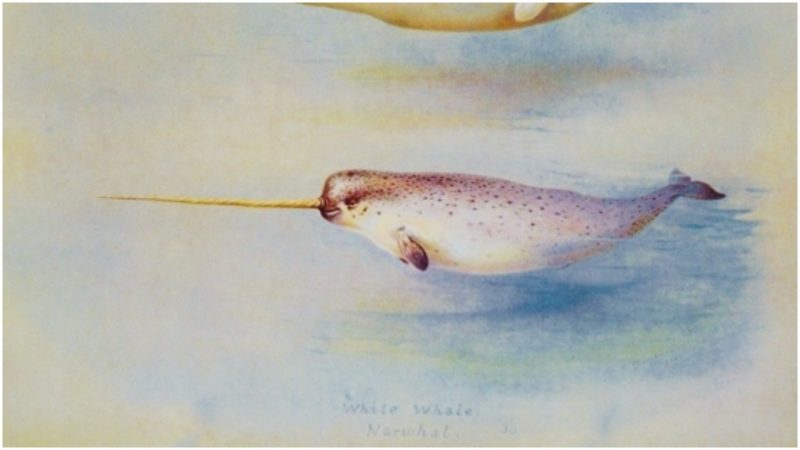Living in the icy waters of the Canadian Arctic and the Greenlandic and Russian waters, narwhals count as one of the most authentic Arctic predators. In winter, their food, benthic prey, can be found at the bottom of the sea and under dense pack ice; during summer, they feed on Arctic cod and Greenland halibut.
For centuries, the toothed whale, considered the king of the Arctic seas, has been appraised for the possession of its large “tusk” from a protruding canine tooth. It is one of the two living species of the unusual Monodontidae family of whales, first described by Carl Linnaeus in the publication Systema Naturae in 1758.

The unusual and unique look of the narwhal has enabled these sea creatures to feature in many legends. Inuit legends tell of the creation of the narwhal’s tusk, that a woman, with a harpoon rope tied around her waist, was dragged into the ocean when the harpoon had struck a huge narwhal. According to the story, she was transformed into a narwhal, and her hair, which she was wearing in a twisted knot, became the emblematic spiral tusk of the narwhal.

In medieval Europe, some people believed that narwhal tusks were the horns from the legendary unicorn. Whilst in the north, the tusk simply had a practical or decorative use, on the European continent, the tusk was believed to have superb magic powers, like healing from poison or curing certain diseases. This made the item worth huge amounts of gold, an opportunity which the Vikings and other northern traders probably used to acquire wealth with.

Those who purchased the Narwhal tusks, believing that it was unicorn tusk, made cups from it, thinking they were able to negate any poison that might have been slipped into their drink. Royal buyers would increase the value of the tusk according to how much they believed in the legends and the magical lore of these mystical sea creatures. For the Vikings and for any other culture that participated in these kinds of tradings, this would have been a perfect system of deception.

During the 16th century, Queen Elizabeth I received a unique carved and bejeweled narwhal tusk worth 10,000 British pounds, an amount just enough to purchase a whole castle. The tusk was delivered from Sir Humphrey Gilbert, a pioneer of the English colonial empire in North America who had proposed the item was from a “sea-unicorn”.
Author Herman Melville wrote a special chapter on the narwhals in his 1851 novel Moby Dick, stating that a narwhal tusk hung in Windsor Castle for a very long time after it was given as a gift to Queen Elizabeth. He also mentions that Danish kings made their thrones from the precious item, which adds to the notion that the narwhal tusk is an early example of commodity fetishism.

As the narwhal tusks were always held in mystery and awe, they were staples of the Cabinets of curiosities, also known as wonder-rooms during the Renaissance Europe; the rooms served as an encyclopedic collection of objects which were still unclear and under the subject of investigation.
Europeans learned the truth about the narwhal tusk once they gradually started to explore the Arctic regions themselves, during the Age of Exploration.
